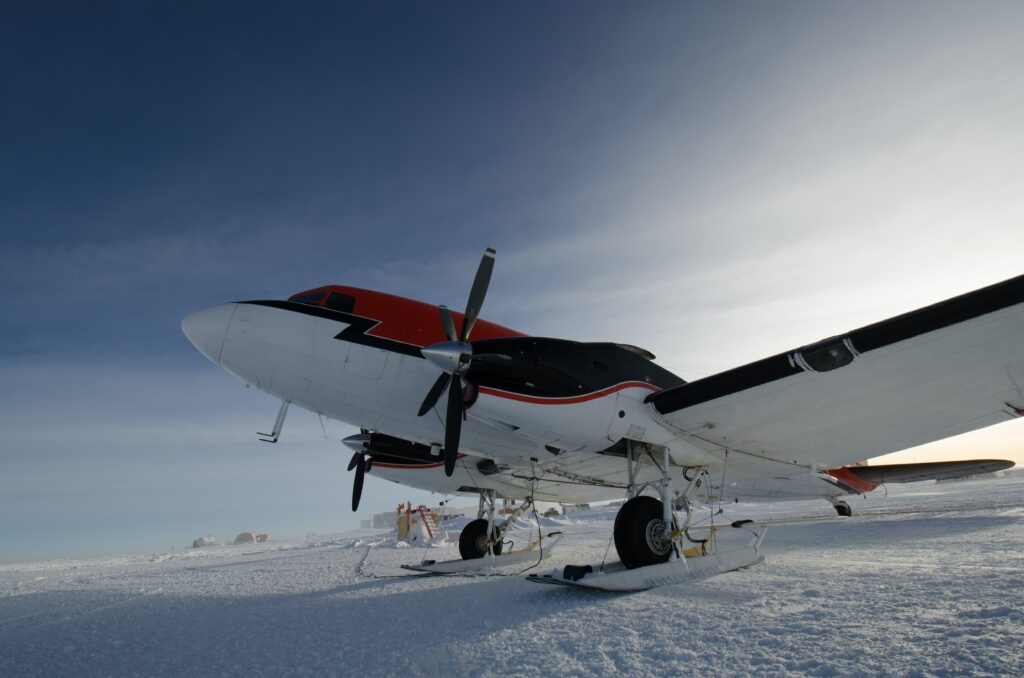Understanding Climate Change


What is climate change?
Climate change refers to long-term shifts in weather patterns and average temperatures on Earth. It occurs naturally, but it is now primarily caused by human activities such as burning fossil fuels, deforestation, and industrial processes. These activities release greenhouse gases into the atmosphere, trapping heat and causing the Earth’s temperature to rise.Causes of climate change
The main factor contributing to climate change is the increase in greenhouse gas emissions. Carbon dioxide (CO2) is the primary greenhouse gas released from burning fossil fuels. Methane (CH4) is another potent greenhouse gas emitted from agriculture, livestock, and landfill waste. Other factors include deforestation, which reduces the Earth’s capacity to absorb CO2, and industrial processes such as cement production.Impacts of climate change
Climate change has far-reaching impacts on our environment, economy, and society. Rising temperatures lead to more frequent and severe heatwaves, droughts, and wildfires. Changing precipitation patterns result in increased rainfall in some areas and more intense storms, leading to flooding in others. Sea levels are rising due to the melting of ice, posing a threat to coastal communities. Climate change also affects ecosystems and biodiversity, leading to shifts in habitats and endangering many species.Predictions for the future
Scientists predict that without swift action to reduce greenhouse gas emissions, the impacts of climate change will continue to worsen. Rising temperatures will lead to more extreme weather events, including hurricanes, heatwaves, and heavy rainfall. Sea levels will continue to rise, causing coastal erosion and flooding. Changes in temperature and precipitation patterns will also affect agricultural productivity, posing risks to food security. By taking action now, however, we have the opportunity to mitigate these impacts and create a more sustainable future.Adapting to a Changing Climate
Assessing your vulnerability
The first step in adapting to a changing climate is to assess your vulnerability. Consider the potential impacts of climate change on your community, such as increased flooding or heat-related illnesses. Identify vulnerable populations, such as the elderly or low-income individuals, who may be more susceptible to these impacts. Assessing your vulnerability allows you to better understand the risks and develop appropriate strategies for adaptation.Preparing for extreme weather events
Extreme weather events, such as hurricanes and heatwaves, are becoming more frequent and severe due to climate change. It is essential to have plans in place to respond to these events and minimize their impacts. Develop emergency preparedness plans that include evacuation routes, communication strategies, and shelters. Raise awareness in your community about the importance of being prepared and share information about local resources and support.Building resilient infrastructure
As the impacts of climate change increase, it is crucial to invest in resilient infrastructure. This can include measures such as reinforcing buildings to withstand extreme weather events, improving drainage systems to manage increased rainfall, and updating transportation networks to be more adaptable. By building resilient infrastructure, we can reduce the vulnerability of communities to climate change and ensure their long-term sustainability.Protecting vulnerable populations
Certain populations, such as low-income communities and indigenous peoples, are disproportionately affected by climate change. It is vital to prioritize the needs of these vulnerable populations in climate adaptation efforts. This can include initiatives such as ensuring access to clean water and healthcare during extreme events, providing support for sustainable livelihoods, and involving them in decision-making processes. By protecting vulnerable populations, we can create more equitable and resilient societies.Reducing Carbon Footprint

Transitioning to renewable energy
One of the most effective ways to reduce our carbon footprint is by transitioning from fossil fuels to renewable energy sources. Renewable energy, such as solar and wind power, generates electricity without emitting greenhouse gases. Investing in renewable energy infrastructure and supporting policies that promote its adoption can lead to significant reductions in carbon emissions.Energy efficiency and conservation
Reducing our energy consumption through energy efficiency and conservation measures is another important step in reducing our carbon footprint. This can include improving insulation in our homes, using energy-efficient appliances, and practicing responsible energy use habits such as turning off lights when not in use. By minimizing energy waste, we can reduce the demand for fossil fuels and decrease greenhouse gas emissions.Eco-friendly transportation
Transportation is a significant contributor to greenhouse gas emissions. Choosing eco-friendly transportation options such as walking, cycling, or using public transportation can significantly reduce emissions. If owning a vehicle is necessary, consider investing in electric or hybrid models. Carpooling and ridesharing are also effective ways to reduce the number of vehicles on the road and decrease carbon emissions.Sustainable agriculture and food choices
The agricultural sector is responsible for a significant portion of greenhouse gas emissions, mainly through livestock production and deforestation for farming. Supporting sustainable agriculture practices that promote soil health, reduce chemical inputs, and minimize water usage can help mitigate these emissions. Additionally, adopting a plant-based or low-meat diet can reduce the demand for livestock and lessen the environmental impact of food production.Mitigating Climate Change
International climate agreements
International climate agreements, such as the Paris Agreement, play a crucial role in mitigating climate change. These agreements aim to limit global warming by reducing greenhouse gas emissions and promoting sustainable development. By participating in and supporting these agreements, countries can work together to create global solutions to the climate crisis.Reducing greenhouse gas emissions
To mitigate climate change, it is essential to reduce greenhouse gas emissions across all sectors. This can be achieved through various means, such as transitioning to renewable energy sources, improving energy efficiency, and adopting cleaner industrial processes. Additionally, reducing emissions from transportation and promoting sustainable land use practices can contribute to significant emissions reductions.Carbon capture and storage
Carbon capture and storage (CCS) technologies capture CO2 emissions before they are released into the atmosphere and store them underground. CCS can be employed in industrial processes and power plants to reduce emissions. Additionally, reforestation projects and nature-based solutions can help capture and store carbon in ecosystems, thereby mitigating climate change.Promoting nature-based solutions
Nature-based solutions involve utilizing natural ecosystems to mitigate climate change and adapt to its impacts. This can include restoring forests, wetlands, and mangroves, which act as carbon sinks and provide natural protection against extreme weather events. Investing in nature-based solutions can bring multiple benefits, including biodiversity conservation, improved water quality, and enhanced resilience to climate change.Managing Water Resources

Water scarcity and drought
Climate change exacerbates water scarcity and drought conditions in many regions. It is crucial to implement water management strategies that prioritize conservation measures, efficient water use, and the protection of water sources. This can include implementing water-saving technologies, improving irrigation practices, and promoting water recycling and rainwater harvesting.Flood management
With changing precipitation patterns, the risk of flooding has increased in many areas. Implementing flood management strategies is crucial to protect communities and infrastructure. This can include building flood-resistant infrastructure, improving drainage systems, and preserving natural floodplains. Additionally, early warning systems and community engagement are vital for preparedness and effective response to flood events.Water conservation strategies
Conserving water is essential for managing water resources sustainably. Implementing water conservation strategies at the individual and community level can significantly reduce water consumption. This can include fixing leaks, installing water-efficient fixtures, and practicing responsible water use habits, such as watering plants during cooler hours. By conserving water, we can ensure its availability for future generations.Improving water quality
Climate change can also impact water quality due to increased sedimentation, contamination, and algal blooms. Protecting water sources and implementing measures to improve water quality are essential. This can include implementing effective wastewater treatment systems, reducing pollution from agriculture and industry, and restoring natural wetlands and filters. By ensuring clean and safe water, we can safeguard public health and the environment.Protecting Biodiversity
Preserving natural habitats
Preserving natural habitats is crucial for maintaining biodiversity and ecosystem resilience in the face of climate change. Protecting and expanding protected areas, such as national parks and wildlife reserves, can provide essential habitats for a wide range of species. Additionally, implementing sustainable land-use practices, such as avoiding deforestation and promoting reforestation, can help conserve biodiversity.Conserving endangered species
Climate change poses a significant threat to many species, particularly those with limited habitats or specific environmental requirements. Conservation efforts should prioritize species at risk of extinction due to climate change impacts. This can include implementing captive breeding programs, establishing protected areas for specific species, and implementing measures to reduce key threats such as habitat loss and illegal trade.Supporting sustainable fishing practices
Sustainable fishing practices are essential for maintaining healthy and resilient marine ecosystems. Overfishing and destructive fishing methods can disrupt ecosystems and deplete fish populations. Supporting sustainable fishing practices, such as implementing fishing quotas, using selective fishing gear, and establishing marine protected areas, can help preserve biodiversity and ensure the long-term viability of fisheries.Reducing deforestation
Deforestation not only contributes to climate change by releasing stored carbon into the atmosphere but also destroys critical habitats for numerous species. Implementing measures to reduce deforestation, such as promoting sustainable land use practices and supporting forest conservation initiatives, is crucial for protecting biodiversity. Additionally, supporting the use of sustainable forest products can encourage responsible forestry practices.Building Climate Resilient Cities

Urban planning for future climates
Urban areas are particularly vulnerable to climate change impacts, given their high concentration of people and infrastructure. Urban planning must consider future climates and incorporate resilience measures into city design. This can include creating green spaces and parks to mitigate heat island effects, designing buildings to withstand extreme weather events, and integrating sustainable transportation options into urban infrastructure.Enhancing green spaces
Green spaces provide numerous benefits, including temperature regulation, improved air quality, and enhanced mental well-being. Increasing the amount of green spaces in cities can help mitigate the urban heat island effect and improve urban resilience to climate change. This can include creating urban parks, rooftop gardens, and vertical green spaces.Improving public transportation
Reducing reliance on private vehicles and promoting public transportation is crucial for building climate-resilient cities. Developing efficient and accessible public transportation systems can reduce greenhouse gas emissions and alleviate traffic congestion. Additionally, prioritizing pedestrian and cycling infrastructure can encourage active transportation and improve urban livability.Implementing climate adaptation policies
Cities play a vital role in climate adaptation efforts, and implementing climate adaptation policies is crucial for their resilience. This can include integrating climate considerations into zoning regulations, incentivizing climate-resilient building practices, and creating adaptive management plans for infrastructure and services. By taking proactive measures, cities can minimize the impacts of climate change on their residents and ensure long-term sustainability.Preparing for Food Security
Adapting agricultural practices
Climate change poses significant challenges to food security due to its impacts on agricultural production. Adapting agricultural practices to changing climates is essential for ensuring food availability. This can include promoting climate-smart agriculture techniques, such as conservation agriculture, agroforestry, and precision farming. Additionally, diversifying crop selection and investing in climate-resistant seed varieties can help mitigate the risks posed by changing climate patterns.Promoting climate-resistant crops
Certain crops are more resilient to climate change impacts than others. Promoting the cultivation of climate-resistant crops, such as drought-tolerant varieties, can enhance food security in the face of changing climates. Supporting research and development of improved crop varieties can help farmers adapt to changing conditions and maintain agricultural productivity.Investing in agricultural research
Investing in agricultural research is vital for developing innovative and sustainable solutions to the challenges posed by climate change. Research institutions, governments, and private sector entities should prioritize funding and support for research on climate-resilient agriculture, soil management, and crop improvement. Sharing research findings and best practices can facilitate knowledge exchange and benefit agricultural communities worldwide.Addressing food waste
Reducing food waste is essential for improving food security and minimizing the environmental impact of agriculture. Food waste contributes to greenhouse gas emissions and places unnecessary strain on agricultural resources. Implementing measures to reduce food waste at all stages of the supply chain, from production to consumption, can help ensure that available food resources are used efficiently and sustainably.
Educating and Raising Awareness
Climate change education in schools
Integrating climate change education into school curricula is crucial for raising awareness and preparing future generations to address its challenges. Educating students about the causes and impacts of climate change, as well as the importance of sustainable practices, can empower them to become climate-conscious individuals and make informed decisions.Promoting public awareness campaigns
Public awareness campaigns play a vital role in engaging and empowering individuals to take action on climate change. These campaigns can raise awareness about the impacts of climate change, highlight sustainable solutions, and encourage behavior change. Using various communication channels, such as social media, television, and community events, can effectively reach a wide audience and inspire collective action.Engaging with the media
The media plays a crucial role in shaping public opinion and perceptions of climate change. Engaging with the media through interviews, opinion pieces, and press releases can help ensure accurate and comprehensive coverage of climate change and related topics. Building relationships with journalists and providing them with reliable information and expert insights can contribute to informed public discourse.Encouraging sustainable lifestyles
Promoting sustainable lifestyles is essential for mitigating climate change and fostering a more environmentally conscious society. Encouraging individuals to adopt sustainable habits, such as reducing energy consumption, recycling, and consuming responsibly, can significantly reduce carbon footprints. Providing resources and incentives for sustainable choices, such as renewable energy subsidies and eco-labeling programs, can facilitate behavioral change.Supporting Climate Change Policies
Voting for climate-conscious politicians
One of the most direct ways to support climate change policies is by voting for politicians who prioritize climate action. When electing representatives at local, national, and international levels, consider their stance on climate change and their commitment to implementing effective policies. Engage with candidates, attend town hall meetings, and participate in political campaigns to ensure climate change remains a priority.Participating in climate activism
Climate activism plays a crucial role in pushing for ambitious climate policies and raising awareness about the urgent need for action. Joining climate advocacy groups, participating in protests and marches, and sharing information on social media can help amplify the voices advocating for bold climate action. By standing together, we can create a powerful force demanding change.Supporting clean energy incentives
Supporting clean energy incentives, such as feed-in tariffs and tax credits, can accelerate the transition to renewable energy. Contact your government representatives to express your support for clean energy policies and incentives. Additionally, consider investing in renewable energy projects or supporting organizations working to promote clean energy adoption.How Do Social Unrest and Climate Change Impact Survival Strategies?
Social unrest tips and strategies are crucial when considering the impact of social unrest and climate change on survival strategies. In turbulent times, individuals must adapt and prepare by developing community networks, enhancing self-sufficiency, and preserving resources. By integrating these social unrest tips and strategies into survival plans, individuals can enhance their resilience and ability to navigate challenging circumstances.
Advocating for environmental regulations
Effective environmental regulations are essential for mitigating climate change and protecting the environment. Advocate for stronger regulations and stricter enforcement of environmental laws. Join or support organizations that work to influence policy decisions and hold governments and industries accountable for their environmental impact. By understanding climate change, adapting to a changing climate, reducing our carbon footprint, mitigating its impacts, managing water resources, protecting biodiversity, building climate-resilient cities, preparing for food security, educating and raising awareness, and supporting climate change policies, we can collectively address the challenges posed by climate change and create a sustainable and resilient future. Together, we have the power to make a positive difference and secure a better world for future generations.
I’m Alex, the author behind True Survivalist. As a survival enthusiast myself, I’ve created this website to serve as a valuable resource for fellow survivalists and preppers. Whether it’s understanding survival situations, emergency preparedness, or finding the right survival gear, I’ve got you covered. Through a series of informative guides, I aim to provide answers to commonly asked questions, debunk common myths, and help you avoid common mistakes. At True Survivalist, I believe in equipping you with the knowledge and tools you need to be prepared for any survival scenario. Join me on this journey of self-reliance and resilience.
